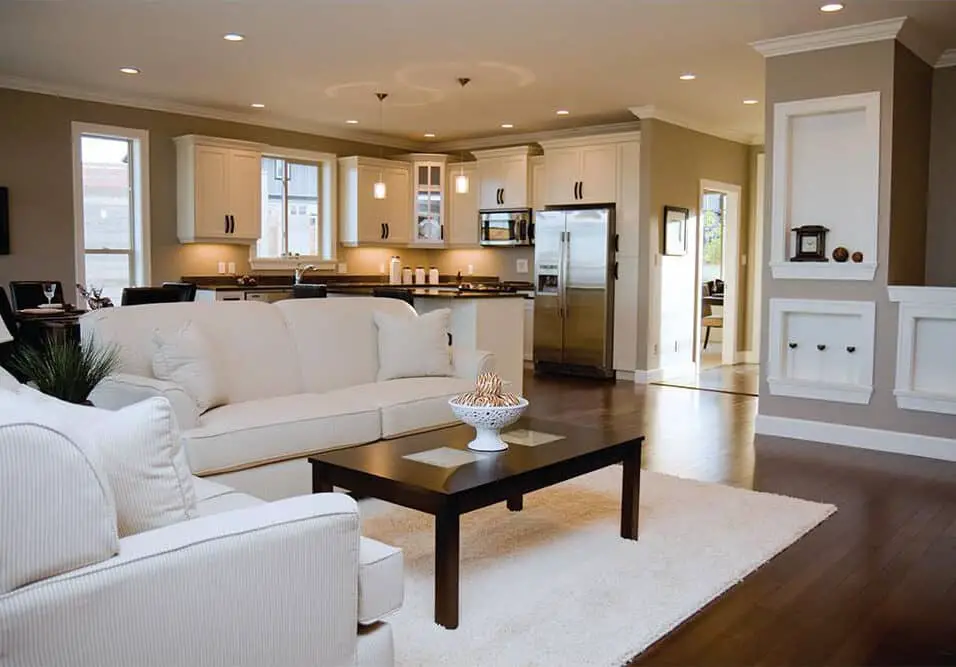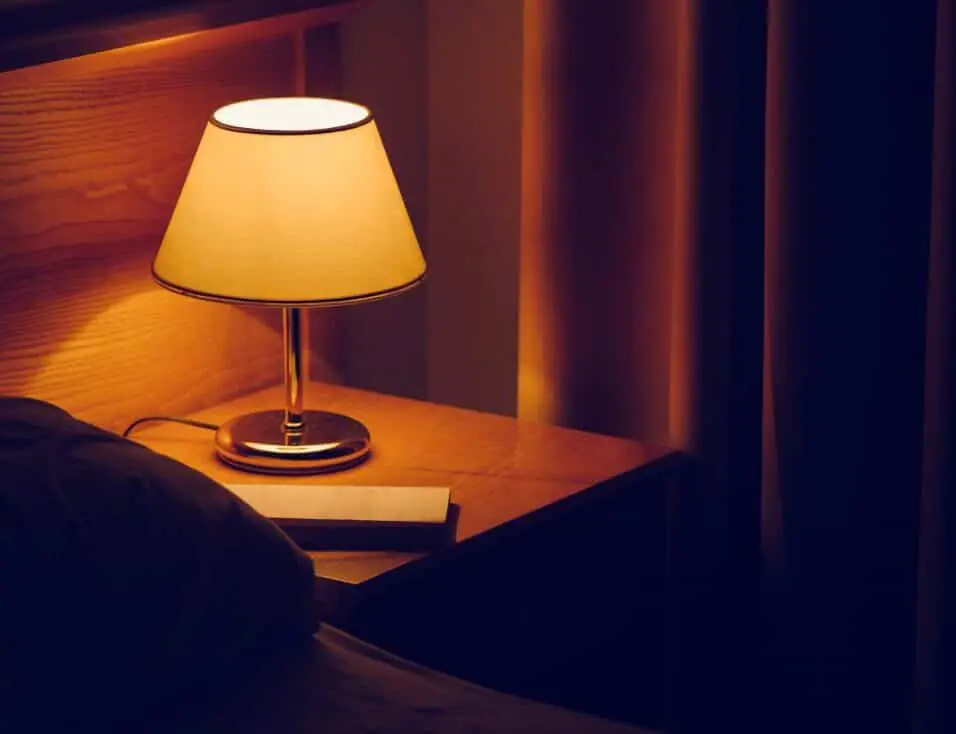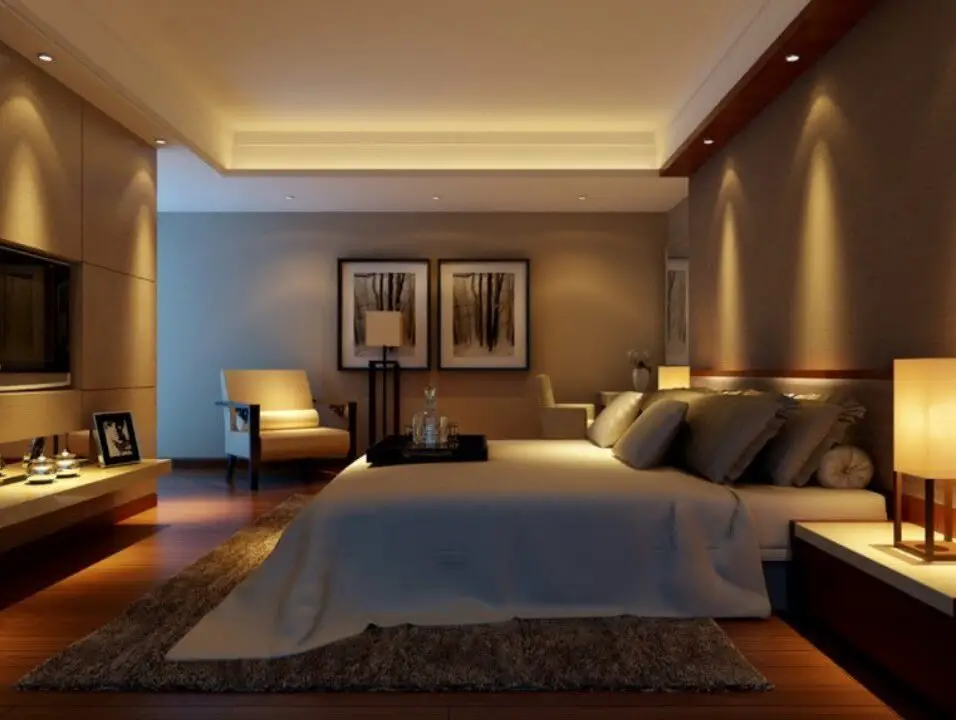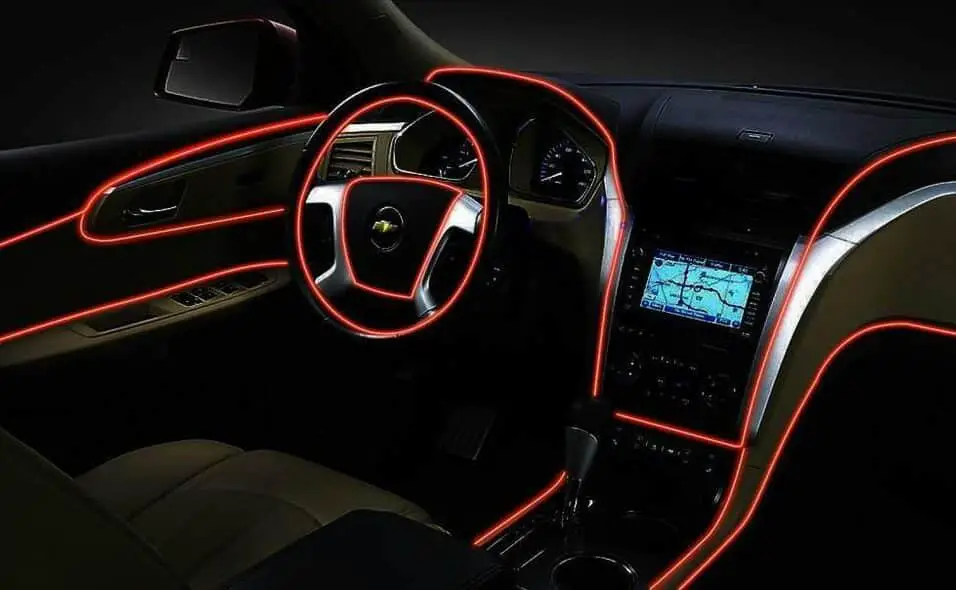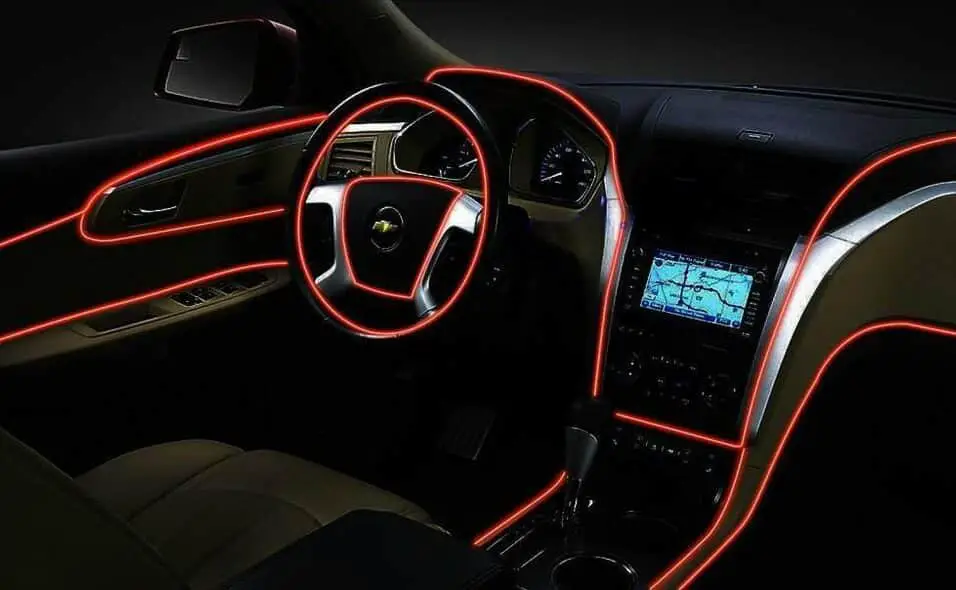Where To Place Recessed Lighting In Living Room
Introduction
Where To Place Recessed Lighting In Living Room: Recessed lighting is a versatile and stylish choice for illuminating your living room. When strategically placed, it can transform the ambiance of the space, creating a warm and inviting atmosphere. Finding the right locations to install recessed lighting in your living room is crucial to achieving balanced and aesthetically pleasing illumination.
The living room is often the heart of a home, serving various functions from relaxation and entertainment to hosting gatherings and family activities. Properly positioned recessed lighting can enhance these experiences by providing both ambient and task lighting where needed.
In this guide, we will explore the key considerations for where to place recessed lighting in your living room. We’ll delve into various placement options and their respective benefits, helping you make informed decisions to create a well-lit, comfortable, and visually appealing living space. Whether you’re planning a lighting makeover or starting from scratch in a new home, this guide will assist you in making the most of your living room’s lighting potential. So, let’s embark on a journey to discover the art of perfect illumination in your living room.
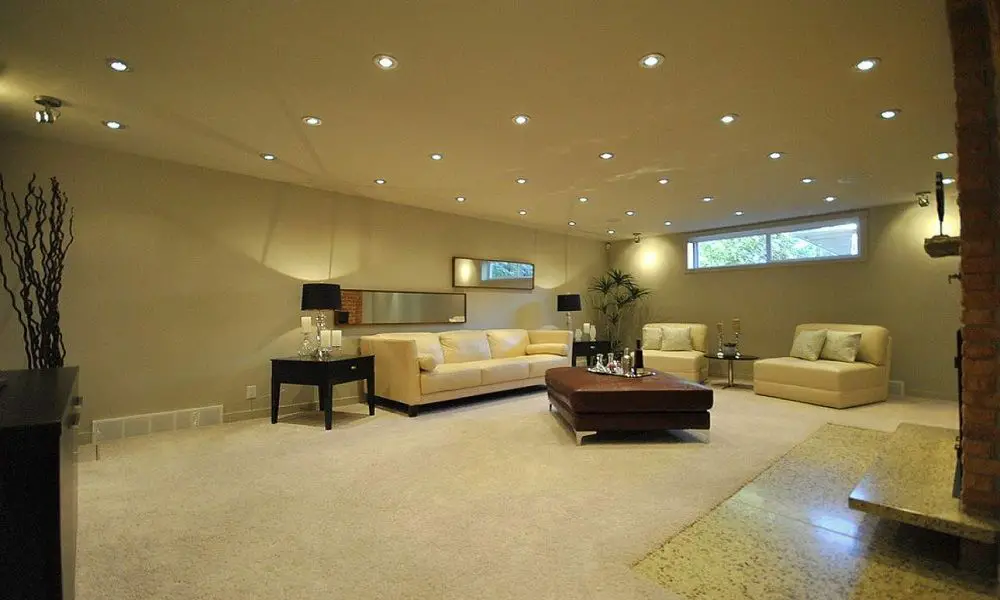
How many recessed lights should I put in my living room?
A common rule of thumb is that you use one recessed light for every 4 to 6 square feet of ceiling space. Doing so provides even, overall illumination.
The number of recessed lights you should install in your living room depends on various factors, including the room’s size, layout, ceiling height, and the desired lighting effect. Here are some general guidelines to help you determine the right quantity:
Room Size:
For an average-sized living room (around 250 to 400 square feet), you may start with about 6 to 8 recessed lights. However, smaller rooms may require fewer lights, while larger spaces may need more.
Ceiling Height:
Higher ceilings may require more recessed lights to provide adequate illumination. Consider adding an extra light or two for each foot of ceiling height beyond the standard 8 feet.
Lighting Goals:
Consider your lighting goals. If you want bright, even illumination throughout the room, you may need more lights. If you prefer a cozier ambiance with accent lighting, you can use fewer fixtures.
Room Layout:
The arrangement of your furniture and the specific areas you want to highlight can influence the placement and number of recessed lights. Concentrate on areas where you need task lighting or wish to create focal points.
Dimming:
Installing dimmer switches can provide flexibility, allowing you to adjust the light level to suit different activities and moods. With dimmers, you may opt for slightly more lights initially, knowing you can adjust them as needed.
Spreading Light Evenly:
To achieve even illumination, space recessed lights evenly throughout the room. Aim for an approximately 2- to 3-foot gap between fixtures for uniform coverage.
Layered Lighting:
Complement recessed lights with other lighting sources like floor lamps, table lamps, or wall sconces to create a layered lighting design that adds depth and versatility to your living room.
It’s essential to strike a balance between providing adequate lighting and avoiding over-illumination. You can always consult with a lighting professional or an electrician to create a customized lighting plan tailored to your living room’s specific needs and aesthetics.
Where should recessed lights be placed in a small living room?
You want to avoid placing recessed lights directly above furniture, as this can create a glare. Instead, try to place them in the middle of the room or off to the sides. To get the most out of your recessed lights, you’ll want to place them about 2 feet away from the walls.
In a small living room, strategic placement of recessed lights can make the space appear larger and more inviting. Here are some placement ideas:
Ceiling Center: Start with a central recessed light to provide even ambient light. This can serve as the room’s focal point.
Corners: Install recessed lights in the corners of the room to create balanced illumination and minimize shadows. Angling them slightly toward the center of the room can help spread light effectively.
Around the Perimeter: Place recessed lights along the perimeter of the ceiling to wash the walls with light. This technique can create the illusion of expanded space.
Over Task Areas: If you have specific task areas, such as a reading nook or a workspace, install recessed lights directly above these areas. This ensures adequate task lighting without over-lighting the entire room.
Accent Lighting: Consider incorporating adjustable or directional recessed lights to highlight artwork, architectural features, or decorative elements. These can add visual interest to the room.
Spacing: Maintain even spacing between the recessed lights to avoid overloading the ceiling with fixtures. A spacing of 4 to 6 feet between lights is typically suitable for small rooms.
Dimmer Control: Install dimmer switches to control the intensity of the lights. This allows you to create various lighting levels for different activities and moods.
Ultimately, the placement of recessed lights in a small living room should enhance its functionality and aesthetics while ensuring a comfortable and visually pleasing environment.
How do you space recessed lights in a living room?
A good general rule for placement is to divide the height of the ceiling by two. The result is the amount of space to leave between each light. For example, recessed lighting spacing for a room with an 8-foot-high ceiling would be 4 feet between each light. This will provide good spacing for general room lighting.
Spacing recessed lights in a living room requires careful consideration to achieve even illumination without over-lighting or creating shadows. Here are steps to help you space them effectively:
Measure the Room:
Begin by measuring the length and width of your living room in feet. Multiply these dimensions to find the square footage.
Calculate Initial Quantity:
For general ambient lighting, a rough guideline is to have one recessed light for every 25 to 30 square feet. Divide the total square footage by 25 or 30 to determine the initial number of lights needed.
Consider Ceiling Height:
Take into account the ceiling height. If your ceiling is higher than the standard 8 feet, you may need more lights. Add an extra light for each additional foot of ceiling height.
Create a Grid:
Imagine a grid on your ceiling with an equal spacing between lights. For example, if you’ve calculated that you need eight lights, you might arrange them in a 2×4 grid.
Center Light Placement:
Place the first light in the center of the room or in a prominent location. This serves as the starting point for your grid.
Maintain Even Spacing:
Space the remaining lights evenly, aiming for an equal distance between them. Adjust the distance as needed to achieve the desired lighting effect.
Adjust for Task Areas:
If you have specific task areas in your living room, such as a reading nook or a dining table, adjust the placement of lights to ensure adequate task lighting in those areas.
Use Dimmer Controls:
Consider installing dimmer switches for your recessed lights. Dimmers allow you to fine-tune the lighting levels and create different moods for various activities.
Layered Lighting:
Complement recessed lights with other lighting sources, such as floor lamps, table lamps, or wall sconces, to create a layered lighting design that adds depth and versatility to your living room.
Consult a Professional:
If you’re unsure about the spacing and placement of recessed lights, or if your living room has unique features, it’s advisable to consult with a lighting professional or an electrician. They can provide customized recommendations based on your specific needs and preferences.
Effective spacing of recessed lights in your living room can enhance the overall lighting quality, create a comfortable atmosphere, and highlight key areas or design elements.
Do recessed lights go in living room?
Many times when we think about living room design, furniture, rugs, and accessories are top of mind. However, lighting is an extremely integral component of the living room, too. In particular, recessed lighting is quite common in living spaces these days.
Yes, recessed lights can be a great addition to the living room. They offer several advantages, including:
Space-Saving: Recessed lights are installed flush with the ceiling, saving valuable floor and wall space. This is particularly beneficial in smaller living rooms.
Clean and Minimalist Look: Recessed lights have a sleek and unobtrusive design, contributing to a clean and minimalist aesthetic in the living room.
Versatile Lighting: They can serve various lighting purposes, from providing general ambient light to accentuating specific areas or artworks with directional fixtures.
Dimmable Options: Many recessed lights are compatible with dimmer switches, allowing you to adjust the light level to suit different activities and moods.
Even Illumination: Recessed lights can distribute light evenly throughout the room, reducing the likelihood of shadows or glare.
Customization: You can choose from a variety of trim styles, finishes, and bulb types to match your living room’s decor and lighting needs.
When installing recessed lights in the living room, consider the room’s layout, furniture arrangement, and lighting goals. Ensure that the placement and spacing of the lights are well-thought-out to provide the desired illumination while complementing the room’s overall design. Whether used for general lighting, accent lighting, or task lighting, recessed lights can enhance the functionality and ambiance of your living room.
Should you put recessed lights over TV?
Recessed lighting above or ambient lighting behind the screen will increase the level of light in the room, and of course there will be no glare on the screen. There are specific bias light fixtures for home entertainment areas, but you can also use your current home lighting to create the same effect.
Whether or not to place recessed lights over a TV depends on your specific lighting needs and the layout of your living room. Here are some considerations to help you decide:
Glare and Reflection:
Placing recessed lights directly above the TV screen can create glare and reflections on the screen, which can be distracting and reduce the quality of your viewing experience. It’s essential to position the lights in a way that minimizes glare.
Ambient Lighting:
Recessed lights can provide ambient lighting to illuminate the entire room. If your TV is in a living room or media room where people gather for various activities, having recessed lights strategically placed around the room can create a comfortable and well-lit environment.
Task Lighting:
Consider incorporating task lighting for the area around the TV, such as wall sconces or floor lamps with adjustable shades. These can provide directed light for reading, gaming, or other activities while keeping the TV screen free from glare.
Dimmer Controls:
Installing dimmer switches for recessed lights gives you control over the light intensity. You can dim the lights when watching TV to reduce glare and then increase the brightness when the TV is off for other activities.
Lighting Zones:
Divide your room into lighting zones. Use recessed lights for general ambient lighting in one zone and task lighting for the TV area in another. This allows you to tailor the lighting to specific activities.
Professional Advice:
If you’re unsure about the placement of recessed lights in relation to your TV, consult with a lighting designer or an electrician. They can provide personalized recommendations based on your room’s layout and your lighting preferences.
In summary, while it’s not always advisable to place recessed lights directly over a TV due to the potential for glare and reflections, incorporating recessed lighting strategically around the room can enhance the overall ambiance and versatility of the space.
How many recessed lights in a 12×12 room?
How Many Recessed Lights? In general, a 12×12 kitchen will use a minimum of three to a maximum of nine recessed lights to illuminate the needed area. Exact lighting needs will vary, so keep your kitchen’s layout in mind when deciding the number of lights you need for your unique space.
The number of recessed lights needed in a 12×12 room depends on several factors, including the room’s function, ceiling height, desired lighting level, and personal preference. Here are some general guidelines to help determine the quantity of lights:
Ceiling Height:
Consider the height of the ceiling. For standard 8-foot ceilings, you may start with one recessed light for every 25 to 30 square feet of floor space. In a 12×12 room (144 square feet), this would translate to approximately 4 to 5 lights.
Lighting Goals:
Determine the purpose of the lighting. If the room serves as a multi-functional space for various activities, such as reading, entertaining, or working, you may opt for more lights to provide flexibility in lighting levels.
Task Areas:
To provide task illumination above seats or dining tables, install additional lights.
Dimming:
Installing dimmer switches for your recessed lights allows you to adjust the brightness as needed. This can affect the initial quantity of lights you install, as you can start with a few and supplement them with additional lighting if necessary.
Placement:
Ensure that the placement of the recessed lights is even and well-distributed to provide uniform illumination without creating shadows or over-illuminating certain areas.
Consult a Professional:
If you’re uncertain about the number of recessed lights required for your 12×12 room, consider consulting with a lighting designer or an electrician. They can assess your specific room layout and lighting goals to provide tailored recommendations.
For a 12×12 room with an 8-foot ceiling, starting with 4 to 5 recessed lights is a reasonable guideline. However, the actual quantity may vary based on your specific needs and preferences. Be sure to consider the room’s function, task areas, dimming capabilities, and consult with a professional for a customized lighting plan.
Is recessed lighting good for high ceilings?
Recessed can lights can be both as ambient lighting and supplemental lighting. Recessed lighting is a popular choice for many tall ceilings. They can be used not only on their own for a great source of ambient lighting but with a statement fixture or fixtures within the room to help supplement the ambient lighting.
Recessed lighting can be an excellent choice for high ceilings, and it offers several advantages for such spaces:
Even Illumination:
Recessed lights can provide even and uniform illumination throughout a room with high ceilings. They distribute light from the ceiling downward, minimizing shadows and dark corners.
Minimalistic Design:
Recessed lights have a sleek and unobtrusive design, which can complement the aesthetics of a room with high ceilings without overwhelming the space visually.
Focal Point Lighting:
In rooms with architectural features or artwork on high walls, recessed lights can be used as accent lighting to highlight these elements effectively.
Customizable:
You can customize the placement and spacing of recessed lights to suit the specific layout and needs of your high-ceilinged room.
Dimming Options:
Many recessed lights are compatible with dimmer switches, allowing you to adjust the light level to create different moods and atmospheres.
Energy Efficiency:
LED recessed lights, in particular, are energy-efficient and can help reduce energy consumption, which is beneficial for larger spaces with high ceilings.
When planning recessed lighting for a room with high ceilings, consider the following tips:
- Determine the room’s function and lighting goals.
- Space the recessed lights evenly to provide consistent illumination.
- Consider using adjustable or directional fixtures to direct light where it’s needed most.
- Utilize wall-mounted dimmer switches for control and flexibility.
- Consult with a lighting designer or electrician to create a customized lighting plan based on the room’s layout and your preferences.
In summary, recessed lighting can be an effective and visually appealing choice for rooms with high ceilings, offering flexibility, even illumination, and a minimalist design that complements the grandeur of such spaces.
How do I choose recessed lighting size?
The best way to choose recessed lighting can sizes is to look at the architectural features of the space. For instance, the amount of space available to you in the ceiling where the light will be placed determines which size may be appropriate for your space.
Choosing the right size for recessed lighting involves considering the following factors:
Ceiling Height:
Ceiling height plays a significant role in selecting the size of recessed lights. For standard 8-foot ceilings, 4-inch or 5-inch fixtures are often appropriate. Higher ceilings may require larger fixtures to provide adequate illumination.
Room Size:
Consider the dimensions of the room. Larger rooms may benefit from larger fixtures or multiple smaller fixtures to ensure even lighting.
Light Output:
Pay attention to the lumen output of the recessed lights. This indicates how bright the light will be. For general ambient lighting, aim for fixtures with a suitable lumen output for the room’s size.
Spacing:
The spacing between recessed lights also affects the size selection. To achieve even illumination, spacing should be based on the fixture’s beam angle and the desired foot-candle level.
Aesthetic Preference:
The visual impact and style of the fixtures should align with your design preferences and the overall decor of the room. Consider the trim style, finish, and shape of the fixture.
Dimming Compatibility:
If you plan to use dimmer switches, ensure that the chosen fixtures are compatible with dimming controls. Dimmable LED fixtures offer flexibility in adjusting light levels.
Task Lighting vs. Ambient Lighting:
Determine if the recessed lights will primarily serve as task lighting or ambient lighting. Task lighting may require brighter and more focused fixtures.
Ceiling Type:
The type of ceiling you have can influence the size selection. For instance, sloped or vaulted ceilings may require fixtures designed for such ceiling types.
Fixture Height:
Consider the fixture’s height. Recessed lights with adjustable or shallow profiles can be advantageous in spaces with limited ceiling clearance.
Consult a Professional:
If you’re unsure about the appropriate size of recessed lights for your space, it’s advisable to consult with a lighting professional or an electrician. They can assess your room’s specifics and provide recommendations tailored to your needs.
In summary, choosing the right size for recessed lighting involves evaluating ceiling height, room size, light output, spacing, aesthetics, and other factors. Careful consideration and, if necessary, professional guidance will help you select fixtures that provide optimal illumination and complement your room’s design.
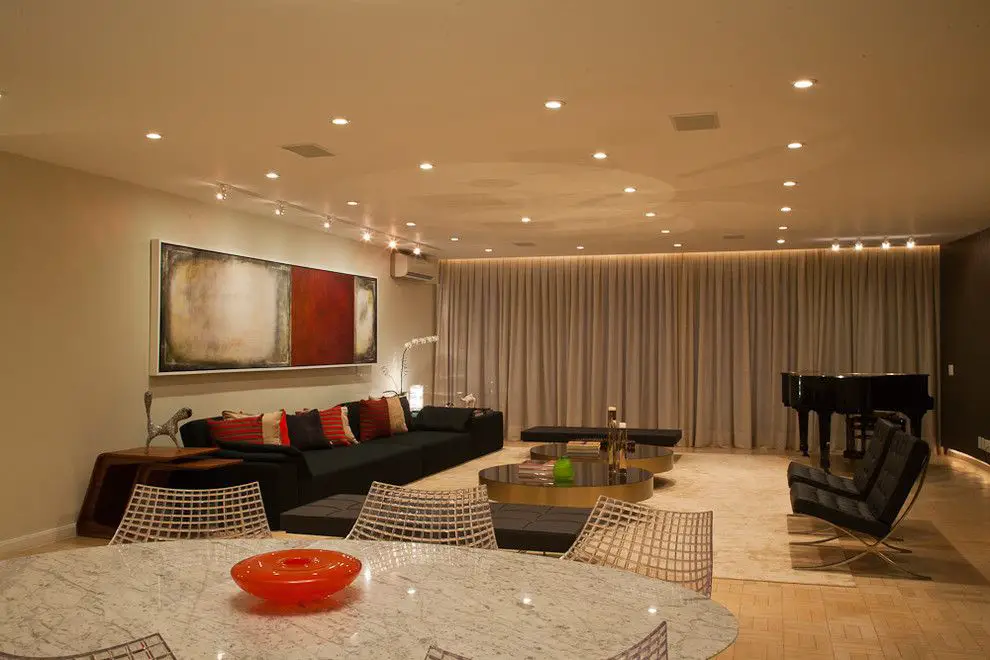
Conclusion
The placement of recessed lighting in your living room can significantly impact the functionality and aesthetics of the space. Careful consideration of where to install these fixtures can elevate your living room’s ambiance, providing the right balance of ambient and task lighting. By following some essential guidelines, you can achieve a well-lit, inviting, and visually pleasing living environment. Consider incorporating dimmer switches to control the intensity of your recessed lighting. This allows you to adjust the brightness to suit different activities and moods. When arranging your furniture, take into account the location of recessed fixtures to ensure that seating areas are well-lit without glare or shadows. Ceiling height plays a role in determining the placement of recessed lights. Higher ceilings may require fixtures to be spaced differently to achieve optimal illumination.
Choose energy-efficient LED bulbs for your recessed lighting fixtures to save on energy costs and reduce environmental impact. The choice of recessed lighting fixtures and trim can reflect your personal style and complement your living room’s decor, whether it’s contemporary, traditional, or eclectic. By carefully planning where to place recessed lighting in your living room and combining it with other lighting elements, you can create a welcoming, well-lit space that suits your lifestyle and design preferences. Whether you’re using recessed lighting for a cozy reading nook, highlighting artwork, or simply brightening up the entire room, a thoughtful lighting design will enhance your living room’s functionality and aesthetics, making it a comfortable and enjoyable space for relaxation, entertainment, and everyday living.




